NIL
Michigan House rep introduces bill to sidestep NCAA NIL ruling
MSU alum and Michigan House Representative D-9th District Joe Tate introduced a bill on June 12 to limit NCAA regulations on name, image and likeness payments to college athletes. Tate, a defensive lineman at MSU from 2000-2003 and former Michigan speaker of the house, presented HB 4643 to block the NCAA, athletic conferences and universities from interfering […]
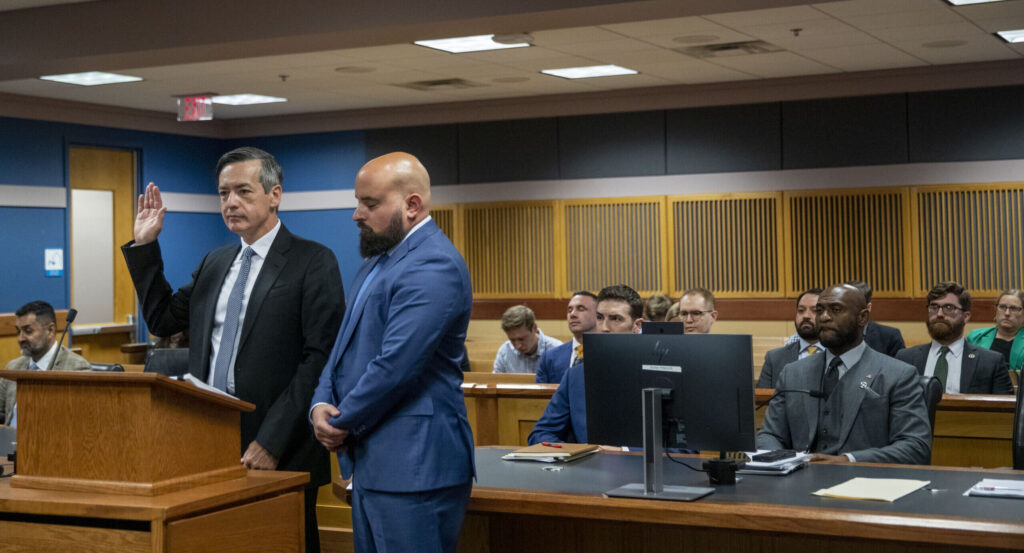
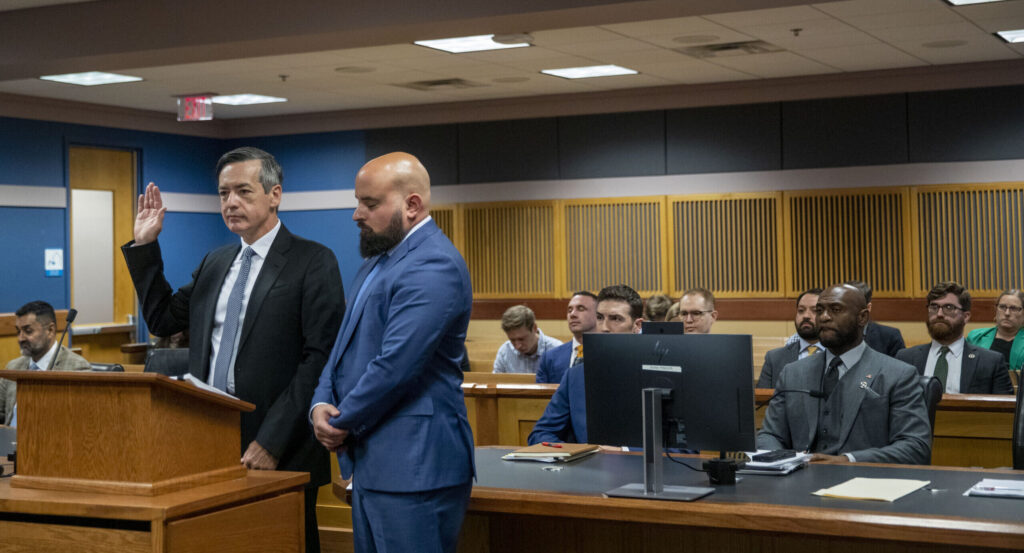
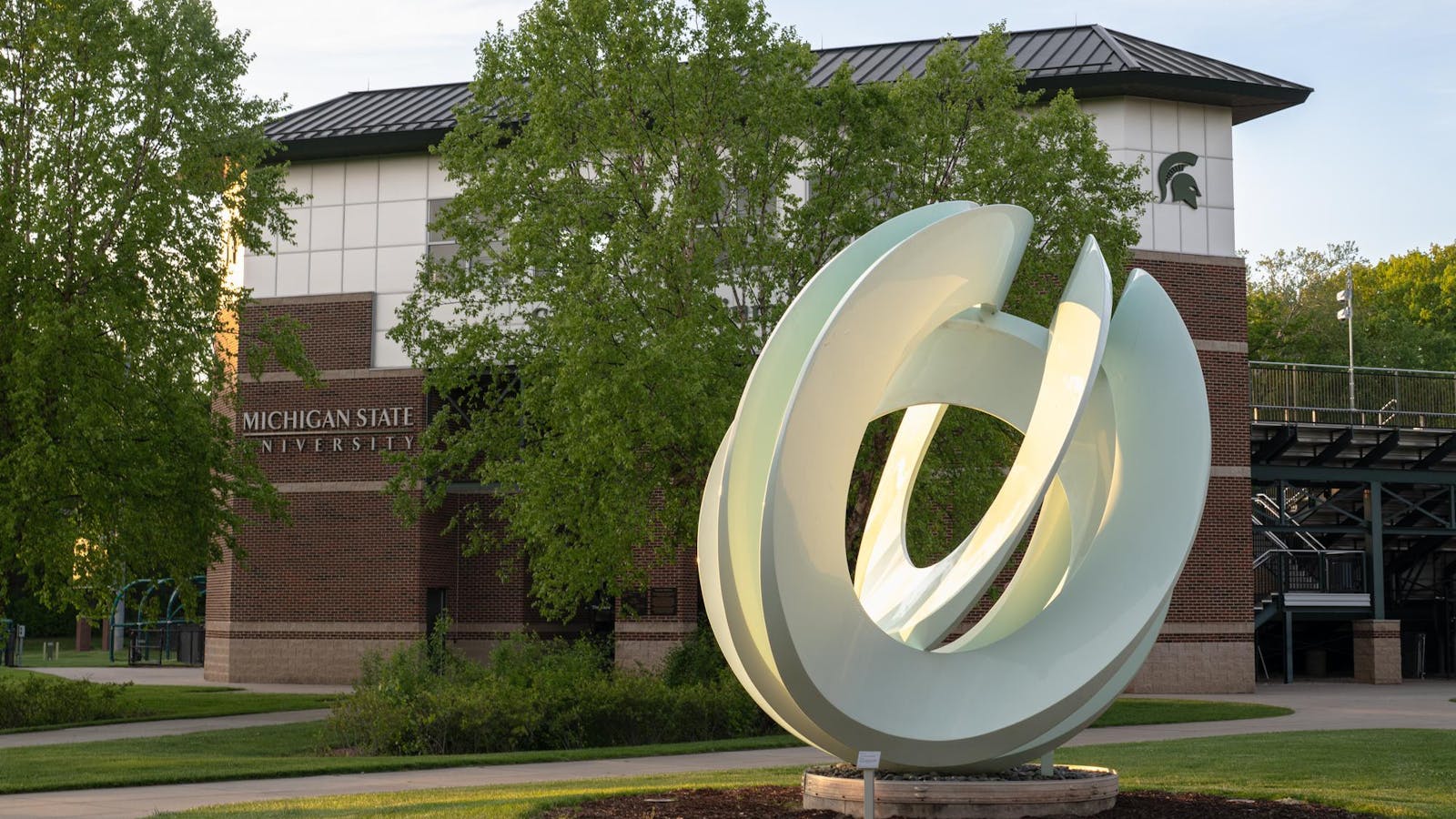
MSU alum and Michigan House Representative D-9th District Joe Tate introduced a bill on June 12 to limit NCAA regulations on name, image and likeness payments to college athletes.
Tate, a defensive lineman at MSU from 2000-2003 and former Michigan speaker of the house, presented HB 4643 to block the NCAA, athletic conferences and universities from interfering with athletes looking to collect on NIL funds.
“There are conflicts with the Michigan statute that we have on the books allowing student-athletes to take advantage of their name, image and likeness while they are at the university that they are participating in and as a student,” Tate said. “It prohibits any entity from limiting a student-athlete’s ability to take full advantage of their name, image and likeness.”
On June 5, a settlement in the House v. NCAA case made way for athletic departments to pay student-athletes directly from university funds, ushering in a new era of NIL in college athletics. The ruling limited the power of third parties and NIL collectives to pay student-athletes.
The bill would circumvent this ruling, allowing athletes and third parties to determine a “fair market value” according to Tate.
In congruence with the House settlement, the NCAA is asking power conferences, including the Big Ten, to comply with the NCAA rules even if it means breaking state laws like HB 4643.
It is unclear how this will unfold between the NCAA and states in the coming months. Industry leaders have called on Congress to enact a law preventing student-athletes from becoming employees and provide the NCAA with antitrust exemptions.
The president of Charitable Gift America and a prominent NIL collective, Dr. Tom Dieters, sponsoring MSU athletes like baseball’s Joseph Dzierwa, said the new bill would allow for athletes to earn compensation without the limits of the university or NCAA.
“The new NCAA rules, and they’re not laws, put a cap on compensation or can even prevent the student from getting an NIL contract altogether,” Dieters said.
MSU tennis standout Ozan Baris said there is an overwhelming amount of uncertainty in the NIL space and stated this bill would put an end to that.
“That’s where NIL is always so beneficial,” Baris said. “It gives me that place where I can play tennis and not have to worry about the financial stress of a financially burdening sport at times.”
Tate has experienced the difficulty of being a student-athlete and states they deserve the same rights that other students receive. “I know the dedication, sacrifices and challenges that come with balancing academics, athletics and personal growth,” he said.
Without the limits imposed by the House v. NCAA case, National College Players Association Executive Director Ramogi Huma said the bill could lead to increased recruiting at universities in the state.
“Student-athletes and their families look at a lot of factors whereas to decide where you go to school,” Tate said. “If Michigan is open for business, for student-athletes being able to take advantage of NIL, I would imagine that would be a tool to attract talent into our universities across the state.”
Support student media!
Please consider donating to The State News and help fund the future of journalism.
Discussion
Share and discuss “Michigan House rep introduces bill to sidestep NCAA NIL ruling” on social media.
NIL
Why Henry Ford’s Draft Decision To Return To College For 2026 Is Risky
Image credit: Henry Ford (Mike Janes/Four Seam Images) By all accounts, Henry Ford was supposed to sign. A top 75 prospect on Baseball America’s draft board for 2025, Ford had the tools, the performance and high-major pedigree. It’s why the draft-eligible sophomore from Virginia was widely expected to begin his professional career this summer. Instead, […]
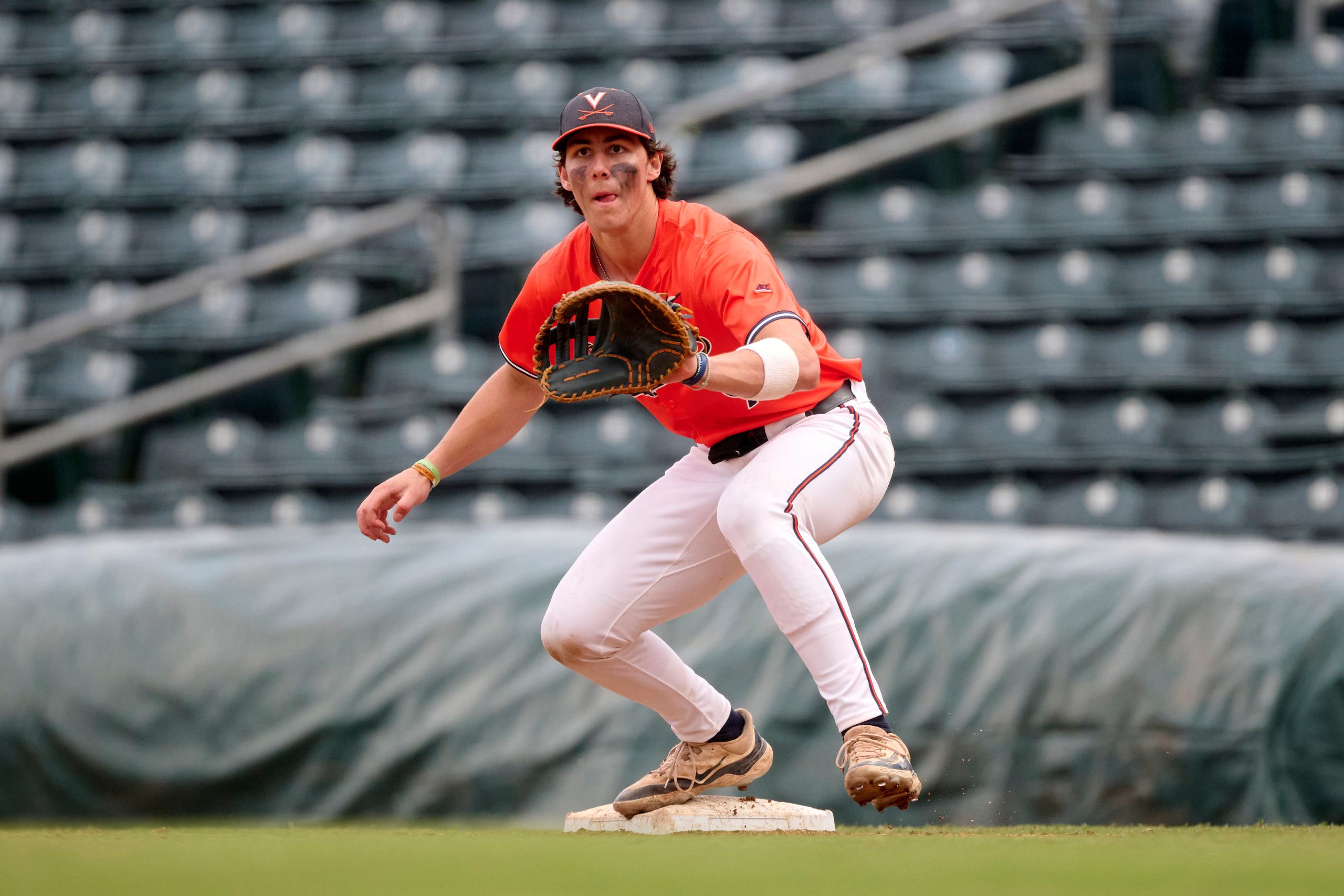
Image credit:
Henry Ford (Mike Janes/Four Seam Images)
By all accounts, Henry Ford was supposed to sign.
A top 75 prospect on Baseball America’s draft board for 2025, Ford had the tools, the performance and high-major pedigree. It’s why the draft-eligible sophomore from Virginia was widely expected to begin his professional career this summer.
Instead, he went undrafted and will be in Knoxville this fall as one of the crown jewels of Tennessee’s portal class.
In doing so, Ford has become this year’s face of a small but significant trend: high-profile players turning down pro ball after their draft-eligible sophomore seasons to return to school, often with the goal of boosting their stock in the following year’s draft.
He wasn’t alone. Jack Arcamone, a catcher from Richmond, passed on a pro deal to transfer to Georgia. Matthew Dallas, a lefthanded pitcher from Wake Forest, chose to return for his junior season rather than sign. So did Tre Phelps, a draft-eligible sophomore from Georgia who will head back to Athens for his junior year.
But the decision to go back to school—especially for hitters—is a perilous one.
The data, while somewhat anecdotal given the small annual sample, paints a cautionary picture. Hitters ranked in the top 200 who returned to school in either 2023 or 2024 saw their stock crater.
Jalin Flores, ranked No. 114 out of Texas in 2024, returned for his junior season and slipped to the 11th round in 2025. Zack Stewart, ranked No. 131 in 2024 from Missouri State, went undrafted and unranked in 2025. Harrison Didawick, Jonathan Vastine and others suffered similar fates.
Hitters who return to the collegiate ranks often do so with the belief that another year of production, strength gains and batted-ball data will vault them into earlier rounds. But the harsh reality is that year-over-year draft movement is unforgiving for that demographic.
Teams often view returning hitters with more skepticism than enthusiasm. There’s a prevailing belief among evaluators that most college bats are largely “formed” by the end of their sophomore year, meaning the ceiling is already visible. Unless a player drastically transforms his swing, shows newfound power or proves he can handle a premium defensive position, the narrative shifts from projection to stagnation. And in a draft pool flooded with younger upside bets and high school bats, standing still often means falling behind.
Pitchers, on the other hand, tend to fare better.
Will Frisch didn’t pitch an inning in 2022 after opting to return to Oregon State following a strong draft-eligible sophomore campaign in 2021 and was still taken in the sixth round that July. Brandon Sproat returned after a top 100 season and went on to sign for seven figures. In 2022, Jonathan Cannon inked a deal for $925,000 despite returning for his junior year.
The difference, in many cases, comes down to perceived ceiling and supply. Projectable college arms with durability or velocity stand out in thin pitching classes. Hitters have a harder time moving the needle. In a class with hundreds of statistical success stories, simply repeating what one did as a sophomore hitter is rarely enough to compel a team to pay more the second time around.
“You’re asking teams to pay more for the same player—or sometimes a worse version of the same player,” one agent said. “The bar is just way higher.”
So why did Ford and Arcamone—both well-liked, analytically-friendly bats—walk away from the table?
Among other things, the answer, increasingly, is NIL.
College baseball has entered a new era. Returning to school no longer means forgoing six-figure earnings. In fact, for many top players outside the top 100 picks, the opposite is true.
According to multiple agents who spoke with Baseball America on the condition of anonymity, NIL collectives are offering “substantial” paydays to players with eligibility remaining, particularly those who hold draft leverage. Quarter-million-dollar deals are no longer rare, and those numbers often eclipse what a sixth- or seventh-round selection might command in slot money.
“An eighth-rounder who earned big in NIL can make more than a sixth-rounder without it,” one agent said. “That’s a real factor in our conversations now.”
For players like Ford, the calculus shifts.
Tennessee just sent eight players to the top three rounds of the draft—five of them transfers. The program has a well-documented history of developing hitters and arms alike and has a robust NIL infrastructure to match. Ford doesn’t need to prove he can play. But if he can hit 15 home runs for a national title contender, raise his exit velocity and show improved defense, there’s a clear path to the first two rounds in 2026, and he’ll get paid handsomely in the meantime.
That math doesn’t work for everyone. Draft-eligible sophomores with leverage often only get it once. Returning can turn that leverage into a liability. There’s performance risk, injury risk and potentially the awkward stigma that comes with being passed over once before.
For every Sproat, there are two or three players who slipped, never regained value or plateaued entirely. The risk-reward scale tips fast.
Still, the landscape is changing.
The combination of performance science, NIL and player agency is empowering more players to weigh their options, not rush them. For players with the right situation—a legitimate plan, a top-tier program and real money on the table—returning can be the smart play.
But it’s not the safe one. The same agents who praise the new NIL economy also caution against seeing it as a cure-all.
“You can get paid now,” one again said. “But it doesn’t guarantee you’ll get paid later.”
Ford and others are betting on both.
NIL
Alabama State launches new NIL fund to align with competitive standard
Alabama State athletic director Dr. Jason Cable announced Wednesday the launch of a new NIL initiative aimed to improve the student-athlete experience at the university. The Hornet Student-Athlete Fund was created in response to the “House settlement” with the NCAA allowing college athletics programs to directly compensate student-athletes for their name, image and likeness. […]

Alabama State athletic director Dr. Jason Cable announced Wednesday the launch of a new NIL initiative aimed to improve the student-athlete experience at the university.
The Hornet Student-Athlete Fund was created in response to the “House settlement” with the NCAA allowing college athletics programs to directly compensate student-athletes for their name, image and likeness.
The fund serves as an opportunity for donors and fans of Alabama State athletics to contribute directly to revenue-sharing models and NIL support structures.
The fund puts Alabama State in a critical position to recruit and retain elite student-athletes, serving as a long-term investment for the future of athletics at the university.
Despite the prestige of some universities for their continued success in athletics, this new era of NIL deals can and does play a role in the minds of recruits and current athletes’ decisions to stay or choose a university.
The institution of a new fund reflects the mission of elevating athletics at Alabama State by providing new opportunities for student-athletes and keeping the university competitive at the Division I level.
The new fund does not replace the current Hornet Club, which remains important in supporting the department’s operating budget.
On Monday, Alabama State announced that the Hornet Club that the annual fund goal for the 2024–2025 giving year was met and surpassed.
The Hornet Club welcomed over 500 new investors and raised more than $500,000 in support of Alabama State student-athletes.
The new fund and continued support of the Hornet Club will continue to keep Alabama State in the spotlight as one of the premier programs in the Southwestern Athletic Conference.
To learn more or contribute, visit the Hornet Club NIL Fund Website for additional information.
NIL
Why Ian Jackson is St. John’s most important team transfer for 2025-26
What transpired last season at St. John’s was the latest in a career of incredible coaching performances from Rick Pitino. He took over the Red Storm in 2023 and wasted little time turning them into a Big East contender for the first time in decades. St. John’s won 31 games, notching both regular season and […]

What transpired last season at St. John’s was the latest in a career of incredible coaching performances from Rick Pitino. He took over the Red Storm in 2023 and wasted little time turning them into a Big East contender for the first time in decades. St. John’s won 31 games, notching both regular season and conference tournament titles last year, though their postseason experience ended earlier than expected in the round of 32.
There’s a certain buzz in Queens again this season, though this year’s team is going to look largely different from last year’s success. Reigning Big East Player of the Year RJ Luis Jr. is gone after a brilliant junior season while starters like Kadary Richmond, Aaron Scott, and Simeon Wilcher also departed in the offseason. It’s not a completely new roster, as star forward Zuby Ejiofor becomes even more of a focal point for Pitino’s squad, but there have been plenty of reinforcements.
Simply put, the Red Storm assembled the nation’s best transfer class and have a roster loaded with talent for 2026. The frontcourt gets a major boost with Bryce Hopkins from Providence and Dillon Mitchell, fresh from his time at Cincinnati. Joson Sanon is a highly-touted shooting guard coming off an underwhelming freshman season with Arizona State. Oziyah Sellers is another brilliant guard from Stanford while Dylan Darling should see decent run after his time at Idaho State.
There almost isn’t a wrong answer when identifying the best new player of this class, but former North Carolina guard Ian Jackson sure might be the most important. A 6-4 guard from the Bronx, Jackson was the #6 freshman prospect in the nation last season and now returns much closer to home after his time with the Tar Heels. A mixed review of a freshman year saw him put up 11.9 points and 2.7 rebounds while knocking down 39% of his 3-pointers, but Pitino and company are excited about his potential.
The expectation is that Jackson doesn’t just step into a major role but likely takes up point guard duties. He’s clearly a very talented prospect coming off a decent freshman season where he didn’t exactly live up to that top billing. He wasn’t the only player who struggled in Chapel Hill last year, but closer to home the hope is that he blossoms and becomes a major leader for St. John’s.
After all he’s stepping into a major role, replacing impressive names like Luis and Richmond from last year’s successful campaign. This transfer class is full of veteran experience and incredible raw talent and St. John’s is hoping they got the combination right for a truly memorable season. If that does come to pass, and the Red Storm get deeper into the Big Dance, then Jackson will have certainly taken a step forward as a sophomore and become a real leader for this squad.
NIL
Will Ross Bjork’s Big Bet on In-House NIL Control work for Ohio State?
The House v. NCAA settlement, finalized on June 6, 2025, was supposed to bring clarity to the chaotic world of name, image, and likeness (NIL) in college sports, but just weeks later, it’s sparking a new wave of conflict. House plaintiff attorneys Jeffrey Kessler and Steve Berman have accused the NCAA and power conferences of […]
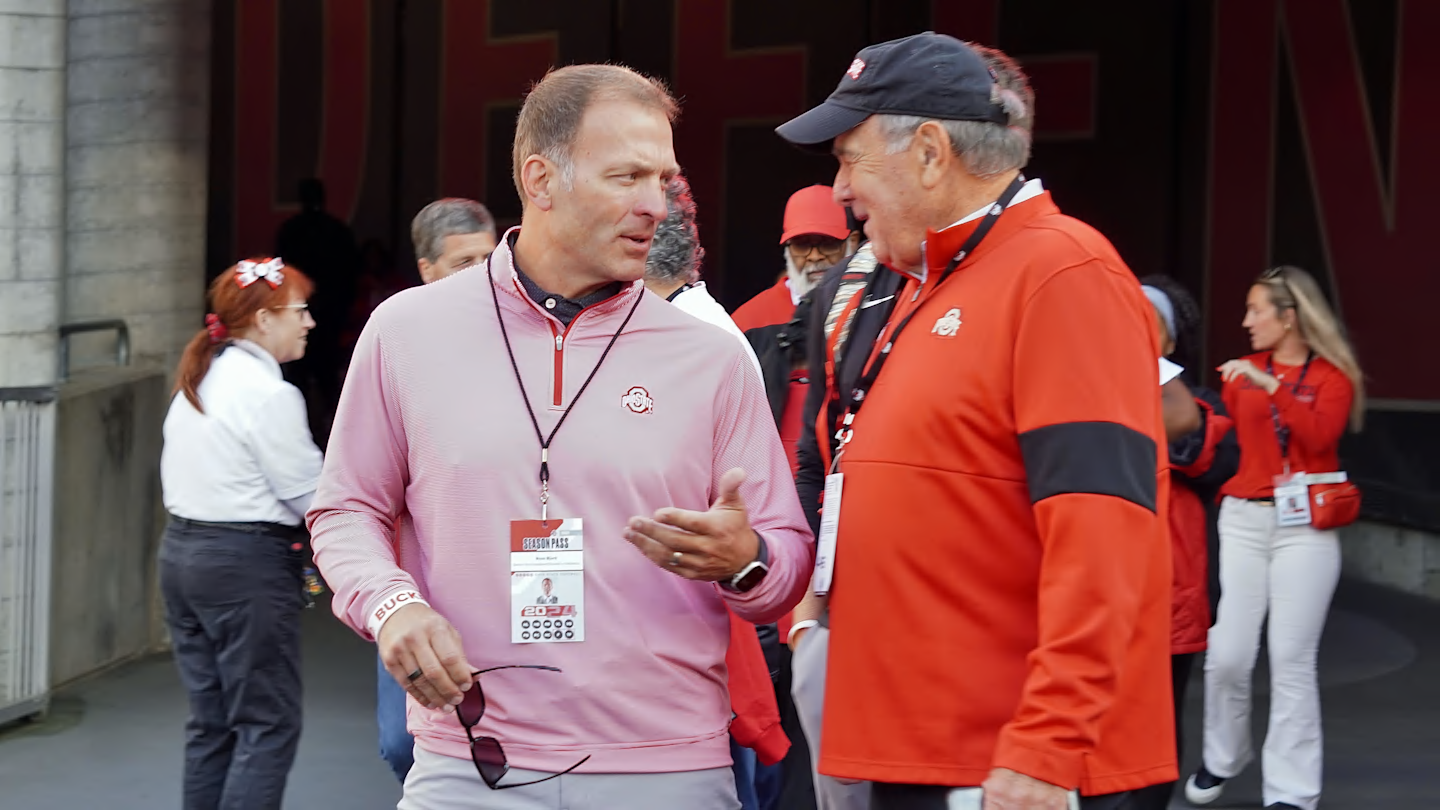
The House v. NCAA settlement, finalized on June 6, 2025, was supposed to bring clarity to the chaotic world of name, image, and likeness (NIL) in college sports, but just weeks later, it’s sparking a new wave of conflict.
House plaintiff attorneys Jeffrey Kessler and Steve Berman have accused the NCAA and power conferences of violating the settlement’s terms, specifically targeting the College Sports Commission’s (CSC) guidance on booster-funded NIL collectives. In a fiery two-page letter sent on July 11, 2025, the attorneys demanded that the NCAA retract the CSC’s memorandum, arguing it undermines the settlement by unfairly restricting collectives, according to Yahoo Sports.
Meanwhile, NIL collectives are gearing up for legal action, according to On3’s Pete Nakos, “Lawsuits are about to come.” This escalating battle raises questions about whether Ohio State Athletic Director Ross Bjork was right to bring NIL operations in-house and if his decisions will position the Buckeyes for success in this new era.
The CSC, tasked with enforcing the House settlement, issued guidance on July 10, 2025, stating that booster-backed NIL collectives must meet a “valid business purpose” to have their deals approved by the Deloitte-run NIL Go clearinghouse. This means collectives can’t just pay athletes to attend a school—deals must involve promoting goods or services for profit, like a pro athlete endorsing a product.
Attorneys are planning to escalate the issue to Judge Nathanael Cousins, the settlement’s appointed magistrate, if the guidance isn’t retracted. Collectives, feeling squeezed out, are already consulting lawyers. But the CSC put out a statement about how they believe the guidance was in line with the settlement terms.
“The guidance issued by the College Sports Commission yesterday is entirely consistent with the House settlement and the rules that have been agreed upon with class counsel,” a CSC spokesperson told Dellenger.
The root of the problem lies in the settlement’s goal to shift athlete payments from collectives to schools, which can now share up to $20.5 million annually with athletes. Ohio State’s Ross Bjork, speaking at a press conference on June 6, 2025, embraced this shift, announcing that Ohio State would allocate $18 million for NIL payments across football, men’s and women’s basketball, and women’s volleyball, with $2.5 million for additional scholarships across its 36 varsity sports.
Bjork emphasized the settlement’s clarity, calling it “transformational progress” after years of murky NIL rules. He also expressed confidence in the CSC’s authority, noting that the settlement’s rules, including the “valid business purpose” requirement, were court-approved and backed by arbitration, making legal challenges difficult.
Bjork’s decision to integrate Ohio State’s NIL operations seems prescient given these developments. By bringing NIL Collectives in-house, Ohio State avoids reliance on collectives, which are now under fire. Bjork’s use of analytics to determine position values, guided by experts like defensive coordinator Matt Patricia, mirrors NFL salary cap strategies, ensuring competitive fairness within the $20.5 million cap.
Bjork’s commitment to maintaining all 36 varsity sports, despite potential scholarship reductions in some programs, aligns with the settlement’s flexibility while adhering to Title IX. Unlike collectives, which risk legal battles over rejected deals, Ohio State’s in-house model ensures compliance with CSC rules, reducing the chance of athlete suspensions for unapproved deals.
While other college football programs must worry and fret over if their players can be paid, Ohio State is in the driver’s seat controlling payments through revenue share and monitoring collectives to not go rouge.
However, the collectives’ pushback could disrupt this system. Their threat of lawsuits echoes concerns raised by industry experts who predicted the settlement’s restrictions would spark litigation.
If it is deemed that the CSC’s actions violate antitrust laws, and the collectives succeed in court, it could loosen restrictions, allowing them to continue operating outside school control. This would challenge Bjork’s strategy, as third-party deals could outpace Ohio State’s capped $18 million, especially in a market like Columbus, where fan passion fuels lucrative opportunities.
Bjork’s confidence in the CSC’s rulings holding up in court may be tested. While he argued the settlement’s legal backing makes challenges unlikely, the attorneys’ letter and the collective deals according to Deloitte’s data, has created a bottleneck that frustrates coaches and athletes alike.
If lawsuits force a retraction of the CSC’s guidance, schools like Ohio State may face pressure to compete with unregulated collective payments, potentially undermining the settlement’s goal of a level playing field.
In the end, Bjork’s proactive move to bring NIL in-house positions Ohio State to navigate this turbulent landscape better than most. If collectives win, Ohio State can cancel the Buckeye Sports Group and have collectives act as they were before. But if the CSC is right and survives court, Ohio State has been set up and ready for this for over a month now.
With collectives preparing to fight, the battle over NIL is far from over. Whether Bjork’s strategy proves to be the right call depends on whether the courts uphold the CSC’s authority or side with collectives, potentially reshaping the rules he’s banking on. For now, Ohio State’s structured approach seems like a smart play in a game that’s still very much in flux.
NIL
Arch Manning, Carson Beck, Jeremiah Smith and Top NIL Valuations amid CFB Media Days
Texas quarterback Arch Manning is projected to enter his first season as a full-time starter while ranked as the highest-paid player in college sports, according to On3 NIL Valuations. On3, which combines estimated compensation from schools and collectives with reported licensing and sponsorship deals, projects Manning’s value at $6.8 million heading into the 2025-26 academic […]

Texas quarterback Arch Manning is projected to enter his first season as a full-time starter while ranked as the highest-paid player in college sports, according to On3 NIL Valuations.
On3, which combines estimated compensation from schools and collectives with reported licensing and sponsorship deals, projects Manning’s value at $6.8 million heading into the 2025-26 academic year.
Here’s a look at the top ten athletes in terms of NIL valuation and roster value, according to On3.
On3 NIL Valuations Top Ten Athletes (as of July 16)
1. Arch Manning, QB, Texas football: $6.8 million
2. Carson Beck, QB, Miami football: $4.3 million
3. Jeremiah Smith, WR, Ohio State football: $4.2 million
4. A.J. Dybantsa, SF, BYU basketball: $4.1 million
5. Garrett Nussmeier, QB, LSU football: $3.8 million
6. LaNorris Sellers, QB, South Carolina football: $3.7 million
7. DJ Lagway, QB, Florida football: $3.7 million
8. Cade Klubnik, QB, Clemson football: $3.4 million
9. Drew Allar, QB, Penn State football: $3.1 million
10. Sam Leavitt, QB, ASU football: $3.1 million
Dybantsa, the potential top pick of the 2026 NBA draft, is the only non-football player ranked within the top 10. He recently signed a deal with Fanatics that the company described as one of the “most significant NIL deals ever,” and which Sportico’s Eric Jackson reported was worth eight figures.
Behind Dybantsa, Texas Tech’s JT Toppin is the highest-paid non-quarterback player with an On3 valuation of $2.8 million.
Smith is the only non-quarterback football player to make the top ten. He lived up to his status as the top recruit in the 2024 class by setting Ohio State records with 1,315 receiving yards and 15 touchdown catches in his freshman season.
The rest of the list is dominated by quarterbacks. Manning, the son of Cooper Manning and nephew of Eli and Peyton Manning, is projected to earn $2.5 million more than the second-ranked player.
Manning will be eligible for the 2026 NFL draft, as will Allar, Nussmeier, Klubnik, Sellers, Beck and Leavitt. Lagway will be draft-eligible in 2027.
The highest-ranked college athlete in women’s sports is LSU basketball player Flau’jae Johnson, who holds a projected valuation of $1.5 million according to On3.
NIL
Women’s basketball stars’ name, likeness and image brands carrying over into the WNBA
Caitlin Clark, Angel Reese and Paige Bueckers are part of the new generation of women’s basketball stars who have been able to profit off their name in college and build brands that have helped them excel off the court in the WNBA. All three players had national star power before stepping foot in the pros. […]
Caitlin Clark, Angel Reese and Paige Bueckers are part of the new generation of women’s basketball stars who have been able to profit off their name in college and build brands that have helped them excel off the court in the WNBA.
All three players had national star power before stepping foot in the pros. Clark and Reese have made the All-Star Game in each of their first two seasons and are two of the most popular players in the league.
Bueckers was voted a starter in her first All-Star Game this weekend.
The next group up in college that is led by Hannah Hidalgo, Flau’jae Johnson, Olivia Miles and JuJu Watkins has already benefitted from the name, likeness and image. According to On3, Johnson’s NIL valuation is $1.5 million.
“NIL, man, it is beautiful,” Johnson said. “This year in March Madness, I had about five commercials running and you know it was so cool watching the game, then seeing myself come on. It’s just a great opportunity.”
Johnson is a guard at LSU, one of the top schools for NIL in a variety of sports from football to women’s gymnastics to women’s basketball. Johnson, who also has a music career, has gained from the exposure the school has given her, doing national media campaigns with Experian and Powerade.
Hildago, who will be entering her junior year at Notre Dame, is happy that players can finally profit off their own images as opposed to the school getting it all.

USC guard JuJu Watkins (12) plays against Purdue during the first half of an NCAA college basketball game in West Lafayette, Ind., Wednesday, Jan. 22, 2025. Credit: AP/Michael Conroy
“It’s a blessing. Schools for decades have been able to make money off of college players’ names. So for now, for student athletes to be able to make money off of how they carry themselves, you know, we’re a brand ourselves,” she said. “I’m a brand myself and so be able to make money off of my name is honestly truly a blessing and just taking advantage of it is the biggest thing.”
Johnson, Hidalgo and Miles, who helped the U.S. qualify for the World Cup next year by winning gold at the AmeriCup earlier this month, all said that they don’t let the NIL deals they have get in the way of their sport. They credit having a strong support system around them as well as people who handle the deals for them.
“I really dedicate one or two times a week to kind of get all my stuff done,” Miles said. “My agent is very good at scheduling that, but most of my money comes from the collective deal, so for that I really don’t have to do much, which is nice. But any other of the other side deals, my agent will send a videographer out to help me or have her edit stuff or whatever it may be.”
Getting deals and earning money hasn’t just helped the players financially. Some have given back to their communities, including Johnson.

Guard Olivia Miles dribbles up court during practice at USA Basketball women’s Americup trials, Wednesday, June 18, 2025, at the USA Olympics training center in Colorado Springs, Colo. Credit: AP/David Zalubowski
“I just want to be one of those people that uses NIL the right way,” she said. “This year I did a campaign with Experian and we relieved $5 million in debt right for families in Louisiana and then every game we won we added $100,000 to the pot.”
Johnson said it was really touching and emotional when she would receive videos on Instagram from people she helped.
“I’m really using my platform for impact for real. So I think that’s the best part of NIL and just making it better for the young girls that’s coming behind us,” she said.
___
The Associated Press’ women in the workforce and state government coverage receives financial support from Pivotal Ventures. AP is solely responsible for all content. Find AP’s standards for working with philanthropies, a list of supporters and funded coverage areas at AP.org.
-

 Technology3 weeks ago
Technology3 weeks agoPet fitness and wellness trends for a healthier and happier dog
-

 College Sports3 weeks ago
College Sports3 weeks agoWAC to Rebrand to UAC, Add Five New Members in 2026
-

 College Sports3 weeks ago
College Sports3 weeks agoA new era of Dickinson hockey begins behind the bench – The Dickinson Press
-

 Motorsports2 weeks ago
Motorsports2 weeks agoWhy Cosmetics are Making Up for Lost Time in Women’s Sports
-

 Motorsports2 weeks ago
Motorsports2 weeks agoTeam Penske names new leadership
-

 Sports1 week ago
Sports1 week agoNew 'Bosch' spin
-

 Youtube2 weeks ago
Youtube2 weeks ago🚨 BREAKING: NBA MVP Shai Gilgeous-Alexander signs the RICHEST annual salary in league history
-

 Sports1 week ago
Sports1 week agoE.l.f Cosmetics Builds Sports Marketing Game Plan Toward Bigger Goals
-

 College Sports2 weeks ago
College Sports2 weeks agoMSU Hockey News – The Only Colors
-
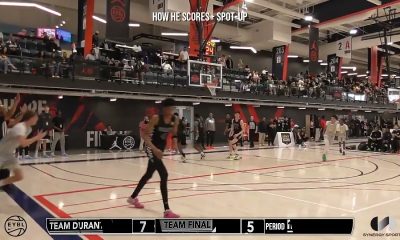
 College Sports2 weeks ago
College Sports2 weeks agoIU basketball recruiting




























